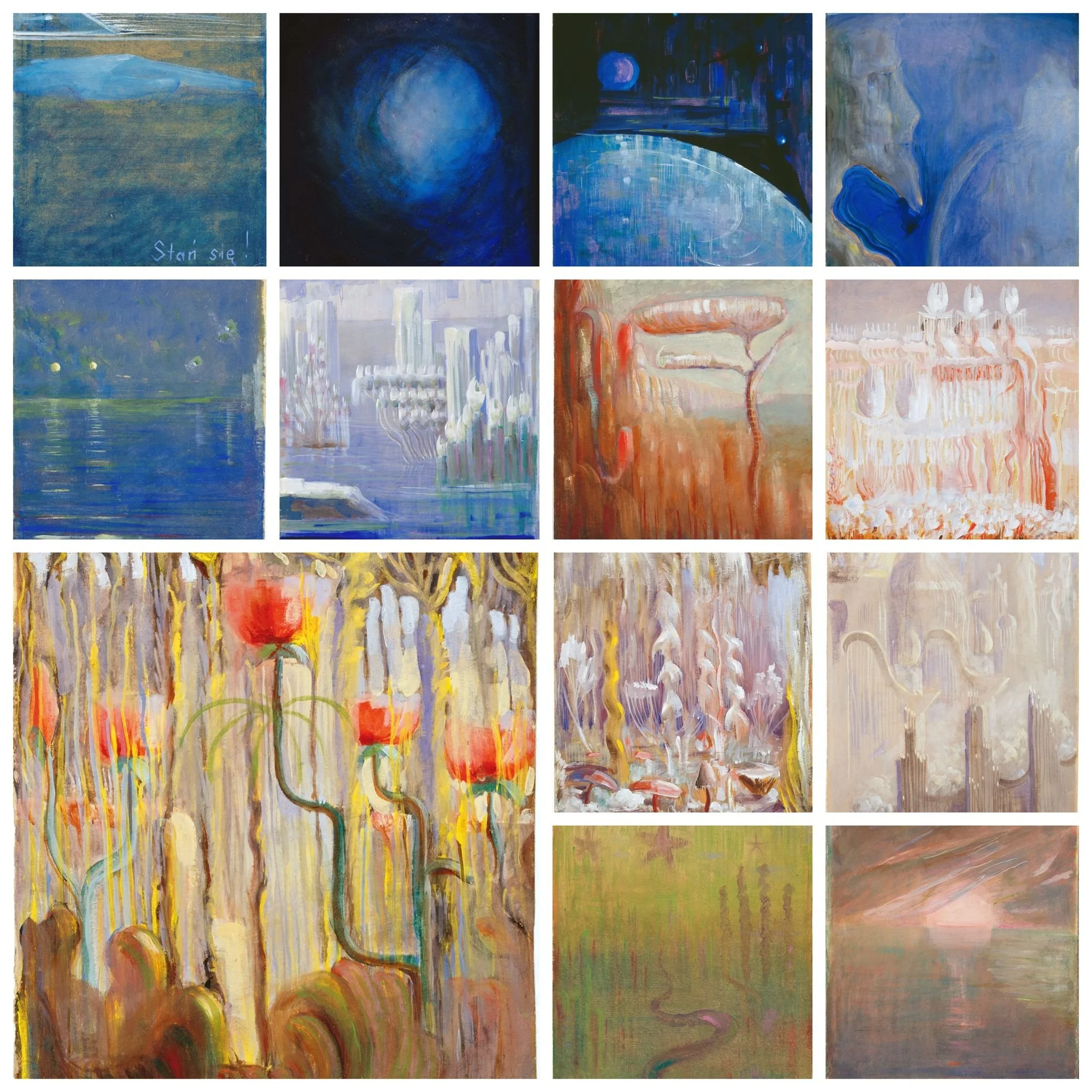Mikalojus Konstantinas Čiurlionis
MKC is one of Lithuania’s greatest cultural icons. Born in 1875 during the throes of the Russian Empire, Čiurlionis excelled in not just one, but two arts: Music and Painting. Whilst the national identity was being suppressed, his symbolic works full of mythological and natural symbolism spoke to a voiceless people, and in his relatively short life of 35 years, he created an enormous legacy of around 400 musical works and 300 paintings.
Bridges, Mikalojus Konstantinas Čiurlionis, 1904.
Mikolajus was born in Varėna, a small town in southern Lithuania (then part of the Russian Empire) to a father that played the organ - spurring his initial love for music.
For his training, he travelled away from home, first to Poland to study piano & composition at the Warsaw Conservatory before heading to Germany to study advanced composition and orchestration at the Leipzig Conservatory.
He branched away from music and completed his education at the Warsaw School of Fine Arts, where he developed his unique style of blending music and painting.
Angel, Mikalojus Konstantinas Čiurlionis, 1908.
For Lithuanians, he represents the perfect blend of art, music, spirituality and national pride, akin to Lithuania’s own Leonardo da Vinci.
For his career, Čiurlionis worked and lived between Warsaw, Druskininkai, Vilnius and St. Petersburg, all then parts of the Russian Empire.
Art historians of today look back at these abstract and cosmic-style works and realise how ahead of his time he was. These were the styles made famous by artists like Kandinsky and Mondrian, but he predated them.
He’s also often considered one of the first artists to “paint music”, organising his paintings like musical compositions, using lines, colours and shapes like notes and chords. Repeated motifs were visual “melodies”, colour combinations were “harmonies” and dynamic contrasts (light vs. dark, sharp vs. soft) was “dissonance and resolution.”
He didn’t just paint single works, but created series that would tell a story or represent philosophical ideas, such as The Creation of the World. These series would draw inspiration from Lithuanian folk tales and legends, giving a distinct national flavour whilst still being universally-accessible.
Today it is not uncommon for museums and festivals to hold his name - such as the M. K. Čiurlionis National Museum of Art in Kaunas.
Creation of the World, Mikalojus Konstantinas Čiurlionis, 1905-06.


